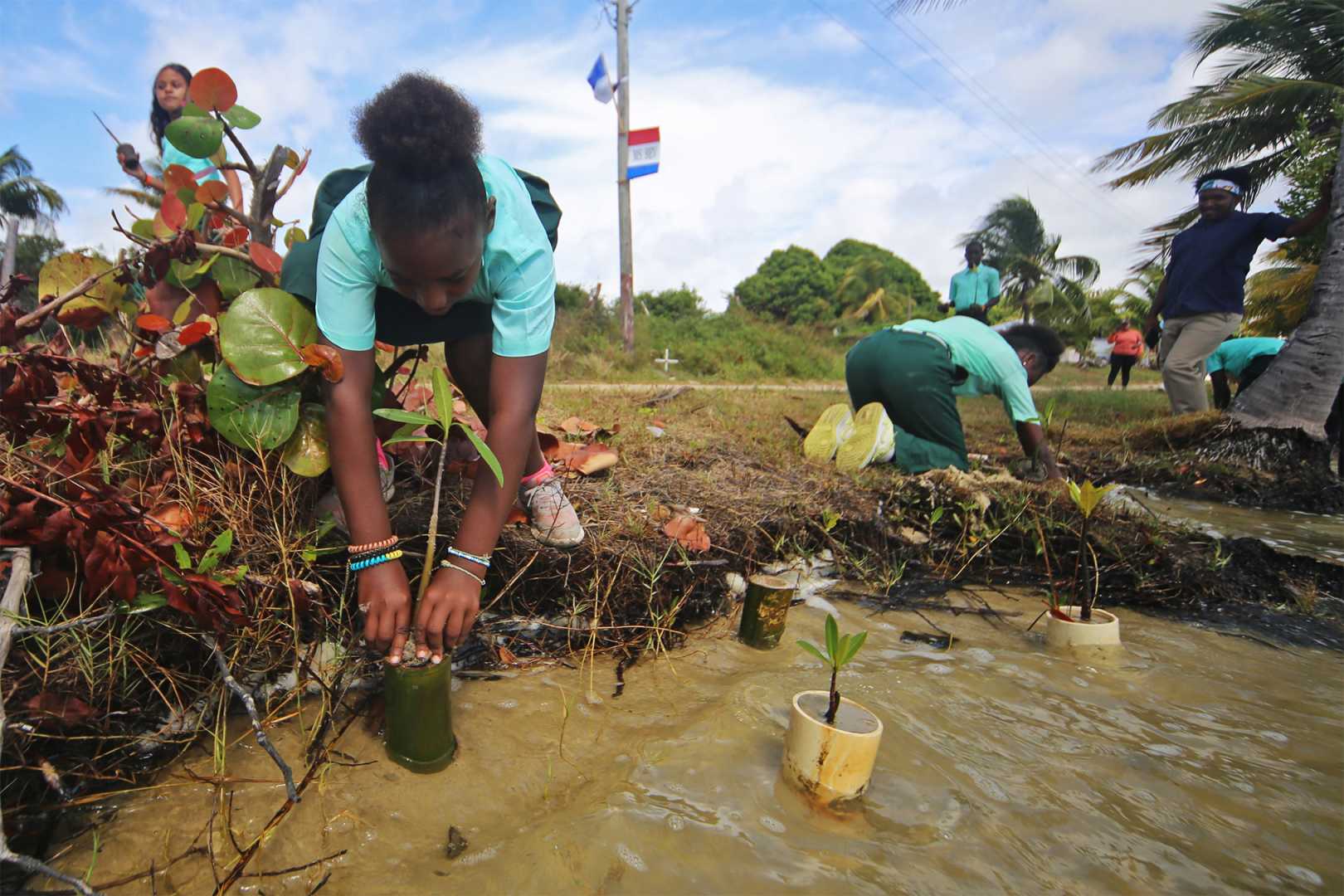News
Belizeans Join Forces to Restore Vital Mangrove Ecosystems

GALES POINT, Belize — A team from Clearwater Marine Aquarium Research Institute Belize is working to combat coastal erosion by restoring mangroves at Gales Point. On a recent morning, program coordinator Jamal Galves and his team unloaded crates filled with mangrove seedlings and bamboo along a narrow shoreline near the Gales Point cemetery.
This small Creole village, surrounded by a massive lagoon that is part of Gales Point Wildlife Sanctuary, has seen significant erosion over the years due to hurricanes, rising sea levels, and the clearing of mangroves. “I’m from this community, I know where the mangroves were in the past, so I recognized that something had to be done,” Galves said.
Typically focused on Antillean manatees that frequent the lagoon, Galves shifted his focus to mangroves during this project. “Instead of putting in major infrastructures like a seawall, we’re trying to fight this issue with a green response,” he explained.
Over the past three years, Galves and his team have utilized a method called the Riley Encasement Method, which involved planting seedlings in protective PVC tubes during coastal storms. This technique has evolved, bringing better success as the team learns what works best for the environment.
With the help of local students from nearby primary schools, the latest tree planting began as they pounded bamboo into the sand and planted seedlings inside. One student noted that these roots will help prevent soil erosion: “They stop the sand washing away from the land.” To date, over 6,000 seedlings have been planted with the community’s support.
Belize boasts more than 2,000 kilometers of coastline with an impressive 88.6% still covered by mangroves, providing essential protection against storms and supporting local fisheries. Senior program officer Nadia Bood of WWF Mesoamerica emphasized this importance: “Belize doesn’t have a significant carbon footprint, but we are suffering the brunt of climate change.”
In light of these challenges, Belize has committed to protecting and restoring more than 12,000 hectares of mangroves by 2030 as part of its emissions reduction goals under the Paris Agreement. Achieving these restoration targets could absorb an additional 1.77 million metric tons of greenhouse gases while also boosting local fisheries.
As the Crocodile Research Coalition, another key player in regional conservation, has illustrated, protecting mangroves is vital for biodiversity. Marisa Tellez, the coalition’s founder, noted the unhealthy trend of clearing land for ocean views, resulting in habitat loss for crocodiles and other wildlife.
Despite regulations in place to protect mangroves, enforcement remains a major issue, as many developers continue to cut down mangroves to the waterline. “Halting mangrove loss is obviously the top priority,” Tellez remarked, urging efforts to plant new mangroves to restore lost habitats.
Under these challenging conditions, organizations like WWF Mesoamerica are spearheading plans to restore mangrove populations in collaboration with community members and local landowners. Through outreach efforts, they aim to foster a culture of conservation to ensure that both the coastal environment and local communities benefit from healthy mangrove ecosystems.












